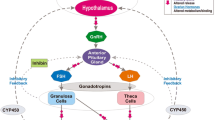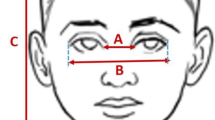Abstract
We aimed to ascertain the prevalence of cardiac malformation (CM) and its association with antenatal exposure to an antiepileptic drug (AED) in infants of mothers with epilepsy (IMEs). Women with epilepsy (WWE) are enrolled in Kerala Registry of Epilepsy and Pregnancy (KREP) in the prepregnancy or early pregnancy period and are followed up with a standard protocol until the IMEs are 6 years old. At 3 months postpartum, a cardiologist, blinded to the AED exposure, carried out a clinical examination and echocardiography on all live-born babies. Patent foramen ovale (PFO) and interatrial septal defects of < 5 mm in size were excluded from CM. Details of maternal epilepsy, folate usage, AED exposure in the first trimester, and newborn characteristics were abstracted from the records of the KREP. We examined 462 babies. Maternal epilepsy was generalized in 201 (43.50%) or localization related in 241 (52.2%). The AED exposure was monotherapy in 262 (56.7%)—carbamazepine (112), valproate (71), phenobarbitone (43), phenytoin (31), and clonazepam (2)—and polytherapy in 126 (27.3%). Seventy-four infants (16.01%) had no AED exposure. There were 36 infants with CM (7.8%; 95% confidence interval: 5.5–10.6). CMs included atrial septal defect (26; 72.2%), tetrology of Fallot (3; 8.3%), patent ductus arteriosus and pulmonic stenosis (2 each; 5.6%), and ventricular septal defect, tricuspid regurgitation, transposition of great arteries (1 each; 2.8%). CMs were significantly more for IMEs with premature birth (p < .003). There was no association between CM and maternal age, epilepsy syndrome, seizure frequency during pregnancy, and folate use. CMs were more frequent with polytherapy (13; 10.3%) compared to monotherapy (17; 6.5%). Those with valproate exposure had a trend (not statistically significant) toward higher frequency of CM compared to IMEs on other AEDs as monotherapy.
Similar content being viewed by others
References
American Academy of Pediatrics Committee on Drugs, Anticonvulsants and Pregnancy (1979) Pediatrics 63:331–333
Artama M, Auvinen A, Raudaskoski T, Isojarvi I, Isojarvi J (2005) Antiepileptic drug use of women with epilepsy and congenital malformations in offspring. Neurology 64:1874–1878
Bertollini R, Mastroiacovo P, Segni G (1985) Maternal epilepsy and birth defects: a case-control study in the Italian Multicentric Registry of Birth Defects (IPIMC). Eur J Epidemiol 1:67–72
Brent RL (2004) Environmental causes of human congenital malformations: the pediatrician's role in dealing with these complex clinical problems caused by a multiplicity of environmental and genetic factors. Pediatrics 113(4 Suppl):957–968
Carlgren L-E, Ericson A, Kallen B (1987) Monitoring of congenital cardiac defects. Paediatr Cardiol 8:247–256
Craig J, Morrison P, Morrow J, Patterson V (1999) Failure of periconceptual folic acid to prevent a neural tube defect in the offspring of a mother taking sodium valproate. Seizure 8:253–254
Friis ML, Hauge M (1985) Congenital heart defects in live-born children of epileptic parents. Arch Neurol 42:374–376
Hanna EJ, Nevin NC, Nelson J (1994) Genetic study of congenital heart defects in Northern Ireland (1974–1978). J Med Genet 31:858–863
Hernandez-Diaz S, Werler MM, Walker AM, Mitchell AA (2000) Folic acid antagonists during pregnancy and the risk of birth defects. N Engl J Med 343:1608–1614
Hoffman JI, Kaplan S (2002) The incidence of congenital heart disease. J Am Coll Cardol 39:1890–1900
Hoffman JIE (2002) Incidence, mortality and natural history. In Anderson RH, Baker EJ, Macartney FJ, Rigby ML, Shinebourne EA, Tynan MJ (eds), Paediatric cardiology, 2nd ed. Churchill Livingstone, Edinburgh, Vol, I, pp 111–139
Izukawa T (1992) Lightfoot NE trends in neonatal congenital heart disease: the Toronto experience. In Freedom RM, Benson LN, Smallhorn JF (eds), Neonatal heart disease. Springer-Verlag, London, pp 31–33
Kaneko S, Battino D, Andermann E, Wada K et al. (1999) Congenital malformations due to antiepileptic drugs. Epilepsy Res 33:145–158
Kaneko S, Otani K, Kondo T et al. (1992) Malformations in infants of mothers with epilepsy receiving antiepileptic drugs. Neurology 42(4 Suppl 5):68–74
Kaplan PW (2004) Reproductive health effects and teratogenicity of antiepileptic drugs. Neurology 63(10 Suppl 4):S13–S23
Lindhout D, Omtzigt JG (1994) Teratogenic effects of antiepileptic drugs: implications for the management of epilepsy in women of childbearing age. Epilepsia 35(Suppl 4):S19–S28
Mitchell SC, Korones SB, Berendes HW (1971) Congenital heart disease in 56,109births; incidence and natural history. Circulation 43:323–332
Mo CN Ladusans EJ (1999) Anomalous right pulmonary artery origins in association with fetal valproate syndrome. J Med Genet 36:83–84
Morrow J, Russell A, Guthrie E, Parsons L et al. (2006) Malformation risks of antiepileptic drugs in pregnancy: a prospective study from the UK Epilepsy and Pregnancy Register. J Neurol Neurosurg Psychiatry 77:193–198
O’Brien MD, Gilmour-White S (1993) Epilepsy and pregnancy Br Med J 307:492–495
Ooshima A, Fukushige J, Ueda K (1995) Incidence of structural cardiac disorders in neonates: an evaluation by color Doppler echocardiography and the results of a 1-year follow-up. Cardiology 86:402–406
Pradat P, Francannet C, Harris JA, Robert E (2003) The epidemiology of cardiovascular Defects, Part I: A study based on data from three large registries of congenital malformations. Pediatr Cardiol 24:195–221
Perucca E (2005) Birth defects after prenatal exposure to antiepileptic drugs. Lancet Neurol 4:781–786
Samanek M, Goetzova J, Benesova D (1986) Causes of death in neonates born with a heart malformation. Int J Cardiol 11:63–74
Sindhu K, Thomas SV, Ajaykumar B, Sylaja PN, Sulekhadevi PB, Jacob S (2005) Complications of pregnancy and delivery in women with epilepsy. Epilepsia 46(Suppl 6):84
Sodhi P, Poddar B, Parmar V (2001) Fatal cardiac malformation in fetal valproate syndrome. Indian J Pediatr 68:989–990
Ten Berg K, van Oppen AC, Nikkels PG et al. (2005) Complex cardiac defect with hypoplastic right ventricle in a fetus with valproate exposure. Prenat Diagn 25:156–158
Thisted E, Ebbesen F (1993) Malformations, withdrawal manifestations and hypoglycemia after exposure to valproate in utero. Arch Dis Child 69:288–291
Thomas SV, Indrani L, Devi GC, Jacob S et al. (2001) Pregnancy in women with epilepsy: preliminary results of Kerala Registry of Epilepsy and Pregnancy. Neurol India 49:60–66
Venugopalan P, Agarwal AK, Johston WJ, Riveia E (2002) Spread of heart diseases seeen in an open access pediatric echocardiography clinic. Int J Cardiol 84:211–216
Acknowledgment
The Kerala Registry of Epilepsy and Pregnancy is supported by a grant-in-aid from the Kerala Council of Science Technology and Environment, the Indian Epilepsy Society, and the Indian Council of Medical Research.
Author information
Authors and Affiliations
Corresponding author
Rights and permissions
About this article
Cite this article
Thomas, S.V., Ajaykumar, B., Sindhu, K. et al. Cardiac Malformations Are Increased in Infants of Mothers with Epilepsy. Pediatr Cardiol 29, 604–608 (2008). https://doi.org/10.1007/s00246-007-9161-4
Received:
Revised:
Accepted:
Published:
Issue Date:
DOI: https://doi.org/10.1007/s00246-007-9161-4




